Test: Pegasus Premio E10 Sport: Heute Alltag, morgen Tour? Mit solch vielfältigen Ansprüchen kommen Trekkingbikes am besten zurecht. Im Pegasus Premio E10 Sport findet man ein Modell, das in Sachen Motorisierung wie Ausstattung als perfekter Allrounder durchgeht. Velomotion hat das Bike sehr intensiv im Prüflabor und auf der Straße getestet.
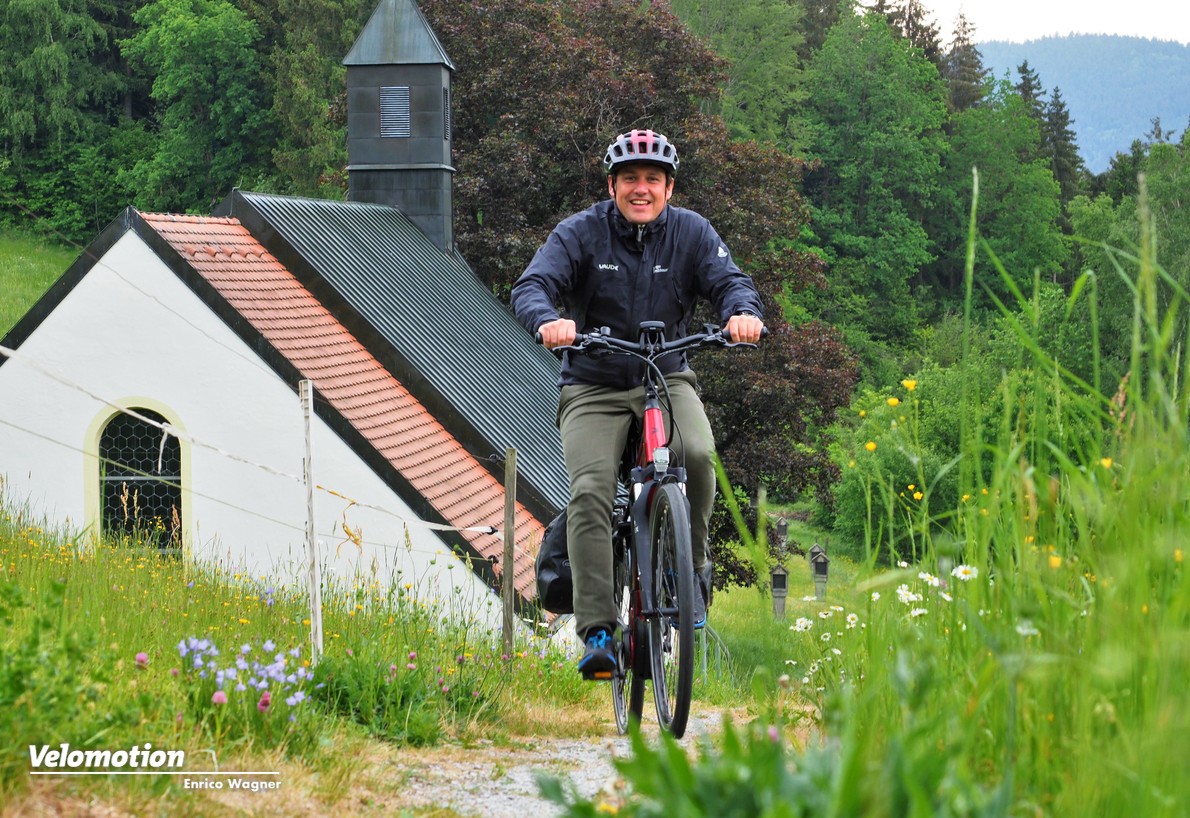
Mehr als nur ein Fahrrad im Keller zu haben ist für Vielfahrer nicht ungewöhnlich – beispielsweise ein robustes Stadtrad und ein leichteres, flotteres Bike für Touren. Das geht so lange gut, wie man die überlegenen Fahreigenschaften des schnellen Tourers im Stadtverkehr nicht vermisst; doch wenn man einmal auf den Geschmack gekommen ist, hat man am trägen Alltags-Hobel schnell keine Freude mehr.
Pegasus Premio E10 Sport: perfekter Allrounder
E-Biker stehen selten vor solchen Entscheidungen, denn bei Fahrzeugpreisen um 3.000 Euro besteht meist kein Spielraum für einen größeren Fuhrpark. Also ist Vielseitigkeit gefragt: Wer mehr mit seinem Pedelec vorhat, als nur durch den Alltag oder nur Touren zu fahren, sollte von Anfang an nach einem Modell wie dem Pegasus Premio E10 Sport Ausschau halten, das sich für beide Zwecke eignet. Und dann landet man meist beim guten alten Trekkingbike, das in der motorisierten Version freilich Eigenschaften aufweisen muss, die beim unmotorisierten Modell keine Rolle spielen.
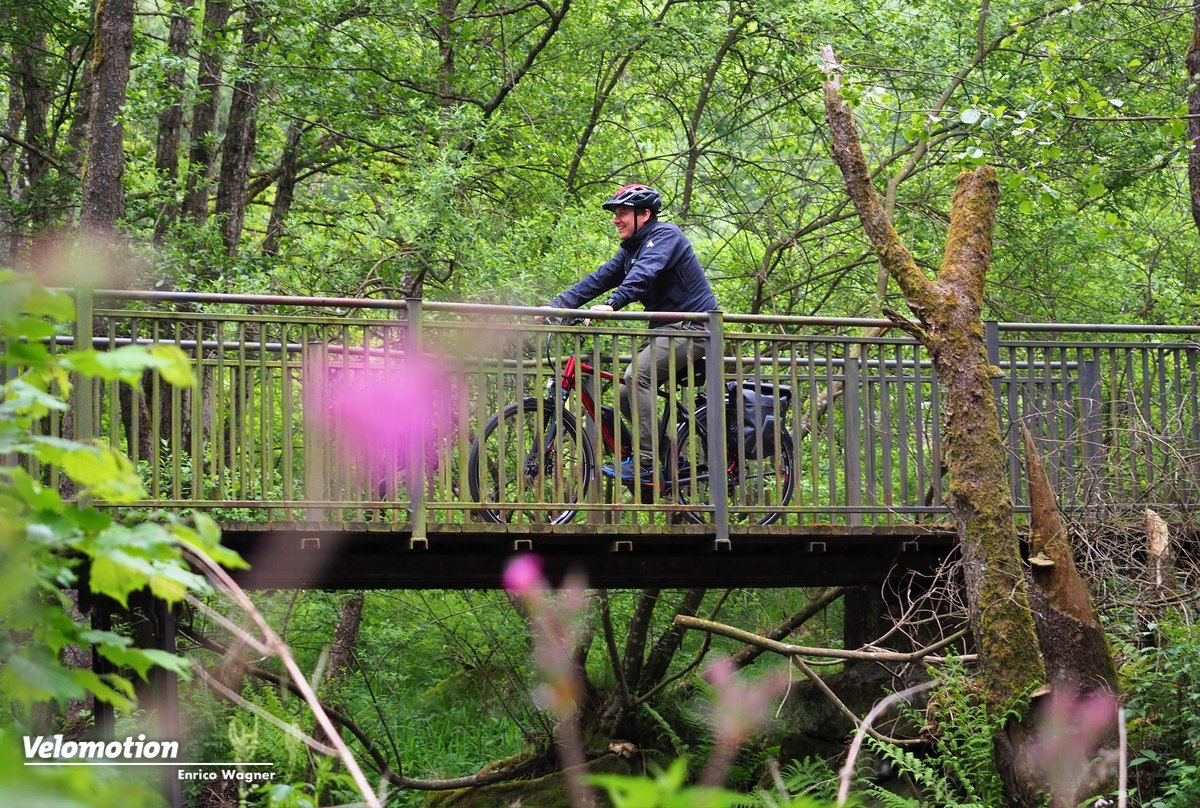
Denn wo sich das Trekking-Fahrrad vom City-Modell durch eine größere Übersetzungsbandbreite mit leichten Berggängen unterscheidet, muss sich der E-Trekker mit einer anderen Motorisierung abheben. Gepäcktransport und Anstiege lassen ein höheres Drehmoment ratsam erscheinen, das es dem Fahrer ermöglicht, am Berg mit kraftsparend flüssigem Tritt unterwegs zu sein. Beim Pegasus Premio E10 Sport – denn um diesen Trekking-Allrounder geht es – heißt das: „Bosch Performance Line CX“-Motor statt des typischerweise am Alltags-Bike verwendeten Bosch Active. Das ursprünglich für E-MTBs entwickelte Aggregat ist hier natürlich auch ans 25-km/h-Limit gebunden, erreicht dieses jedoch deutlich flotter, was wiederum bei Fahrten in der Stadt ein großer Vorteil ist – Stichwort Ampelstart.
Und auch dem Spaßfaktor kommt der starke Motor entgegen, wie unsere Testfahrer auf rund 700 Kilometern im Alltag und auf Touren feststellen konnten – übrigens in einer bergigen Landschaft, die auch der großen Gangvielfalt des Pegasus entgegenkommt. Wo das typische Achtgang-Tourenbike mit einer Übersetzungsbandbreite von gut 300 % daherkommt (der größte Gang ist dreimal so lang übersetzt wie der kleinste), bietet die Zehnfach-Kassette des E10 Sport beinahe 400 % – die schon angesprochenen leichten Berggänge, die den meisten Alltagsrädern fehlen. Und dank der Kettenschaltung steht es dem Nutzer außerdem frei, die Übersetzung seinen Bedürfnissen anzupassen.
Pegasus Premio E10 Sport: Bremsen, Reifen, Federgabel – eine gute Kombination
Scheibenbremsen sind längst Standard an allen möglichen Rad-Typen, dabei freilich nicht überall gleich gut. Einfache Ausführungen kommen nicht unbedingt über das Niveau von Felgenbremsen hinaus; je nach Nutzungskonzept und Sitzposition müssen sie das aber auch nicht. Beim Tourenrad mit entspannt-aufrechter Körperhaltung wird das Vorderrad vergleichsweise gering belastet, und wenn die Bremse zu kräftig ist, steigt die Blockiergefahr. Beim Pegasus Premio E10 Sport dagegen bringt der Fahrer trotz des angenehm hohen Lenkers viel Druck aufs Vorderrad, sodass sich die Verzögerungskräfte sicher übertragen lassen.
Was sich in der Praxis rasch zeigt und auch beim Prüfstandtest herauskam: Die Shimano-Bremsanlage (180er Scheibe vorne, 160er hinten) glänzt mit optimaler Dosierbarkeit und guten Leistungen – auch bei etwas höherem Fahrergewicht. Beziehungsweise beim Gepäcktransport, den Pegasus mit einem gut darauf zugeschnittenen, robust verschraubten Träger erleichtert. An dem Rahmen etwas unterhalb der eigentlichen Trägerplatte lassen sich Taschen einhängen, dazu kommt eine stabile Federklappe, wie sie viele Radler im Alltag zu schätzen wissen.
Mit dem Schwalbe Marathon Plus ist am Pegasus Premio E10 Sport ein solider, pannenfester Reifen montiert, dessen 40er Breite sich dem Trend zu extrem voluminösen E-Bike-Reifen widersetzt. Auf Asphalt rollt der Pneu leichtfüßig daher und ist dabei griffig genug für raue Schotterpisten. Ungebremst gegen die Bordsteinkante fahren sollte man mit dem Marathon Plus vielleicht nicht, aber das empfiehlt sich auch nicht mit einem 60er Urban-Pneu. Ohnehin sorgt die Federgabel mit mittellangem Hub für ordentliche Stoßdämpfung an der Front; die steil stehende Alu-Sattelstütze hingegen ist eher hart – wer mehr Komfort will, sollte eine Parallelogrammstütze nachrüsten.
Pegasus Premio E10 Sport: ausgezeichnete Reichweiten in Labor- und Praxistest
Sehr angenehm ist die Form von Lenker und Griffen – hochwertige Exemplare der Firma Ergon, die verdrehfrei am Lenker befestigt sind und auch auf längeren Strecken keine Druckbeschwerden verursachen. „Länger“ darf durchaus wörtlich genommen werden: Die Prüfstandsmessungen des Pegasus Premio E10 Sport im renommierten Testlabor von Velotech ergaben eine Reichweite von 95 km in der Ebene bei einer Durchschnittsgeschwindigkeit von 25 km/h und 21 km am Berg bei durchschnittlich 21 km/h. Tourenfahrer müssen also nicht befürchten, auf der Hälfte der Tagesetappe mit ihrem Pegasus Premio E10 Sport ohne Strom dazustehen. Diese Reichweiten wurden wohlgemerkt in der höchsten Unterstützzungsstufe „Turbo“ erreicht. Im Modus „Tour“ oder „Eco“ lassen sich durchaus Reichweiten von 200 km realisieren.
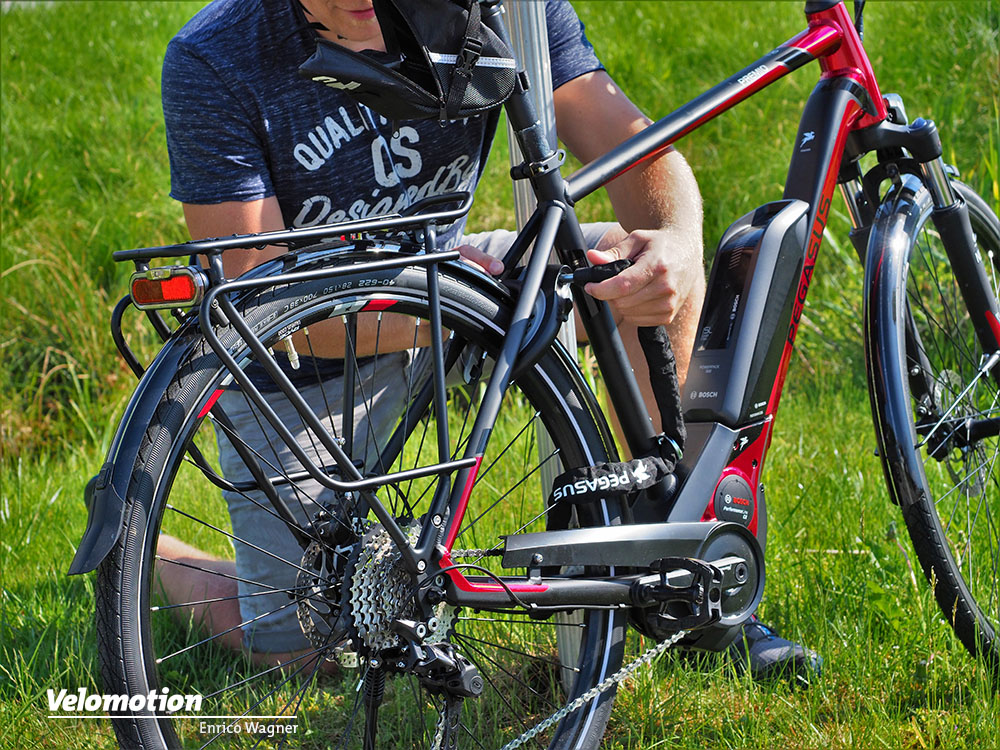
Wer im Alltag gern aufrechter als auf Touren sitzt, kann die Lenkerhöhe am Pegasus Premio E10 dank des verstellbaren Vorbaus einfach (wenn auch nicht werkzeuglos) verändern; die weniger oft zu korrigierende Sitzhöhe wiederum lässt sich blitzschnell per Schnellspanner justieren.
Als überaus praktisch und nutzerfreundlich erwies sich die am Testbike montierte Kombination von Rahmen- und Kettenschloss. Allerdings dürfte die zur Unterbringung der Kette genutzte Satteltasche etwas robuster ausfallen, und für längere Stopps sollte ohnehin ein solides Bügel- oder Faltschloss angeschafft werden – letzteres könne platzsparend an den Flaschenhalterbohrungen des Unterrohrs montiert werden.
Pegasus Premio E10 Sport: 400Wh oder 500 Wh?
Der letzte Schrei am E-Bike ist ein in den Rahmen integrierter Akku – so ziemlich das einzige moderne Merkmal, das das Pegasus Premio E10 Sport nicht bietet und von den Schwestermodellen Premio Evo 10 unterscheidet. Ein großer Verlust ist das nicht angesichts der gelungenen optischen Einpassung des Stromspeichers; andere Faktoren wie die sehr aufgeräumte Zugverlegung sprechen ohnehin für das Pegasus Premio E10 Sport. Und am Ende lässt sich der Unterrohrakku leichter demontieren.
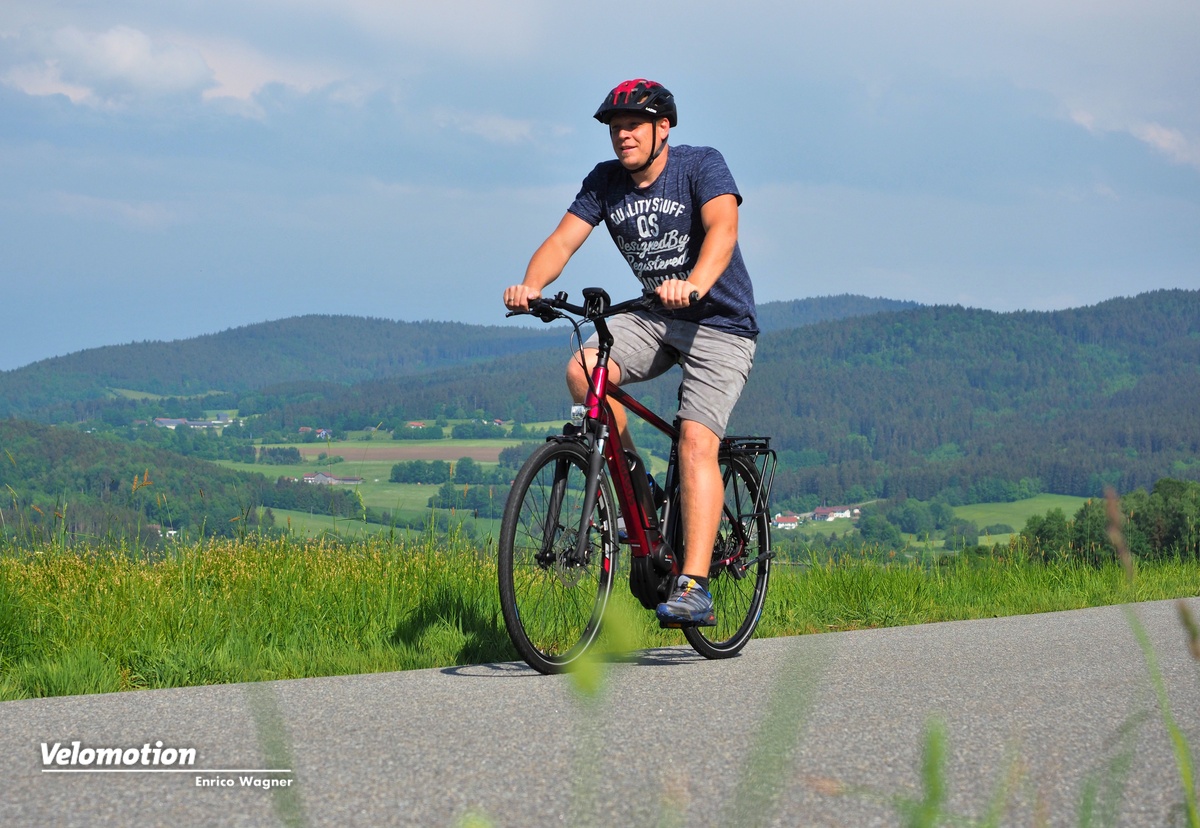
200 Euro Unterschied liegen zwischen den Varianten mit 400- bzw. 500-Wh-Speicher – eine Investition, die überlegt werden will und sich nach dem angepeilten Einsatzzweck des Bikes richten wird. In Abhängigkeit davon kann man im Übrigen auch die Rahmenform wählen. Trapez-, Tiefeinsteiger- sowie Diamant-Variante stehen zur Auswahl, erstere in vier Farben und drei Größen, letzterer in drei Farben und vier Größen. Das Modell mit tiefem Durchstieg versteht sich dabei durchaus als Unisex-Variante; stabil und flattersicher sind alle Ausführungen. Kein Wunder also, dass das Pegasus Premio E10 Sport zu den meistverkauften E-Bikes Deutschlands gehört. Und das spricht dafür, dass dieses E-Bike wirklich eine große Bandbreite an Einsatzbereichen abdeckt – ein flott motorisierter Alleskönner, der Spezialisten überflüssig macht.

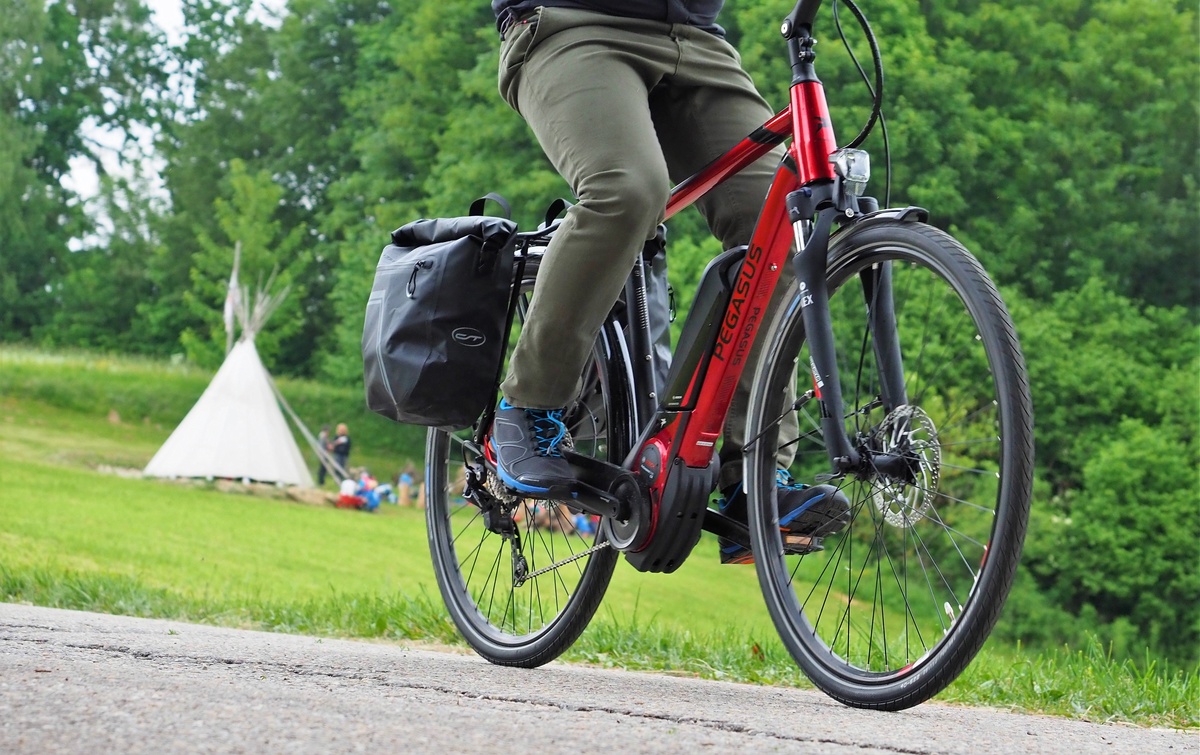
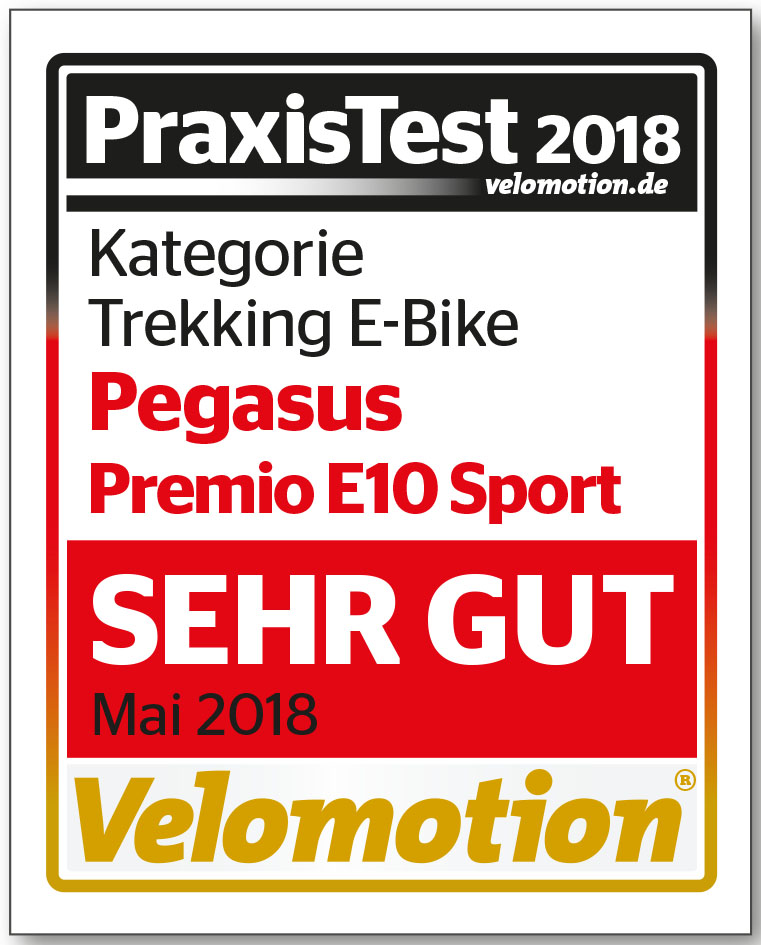
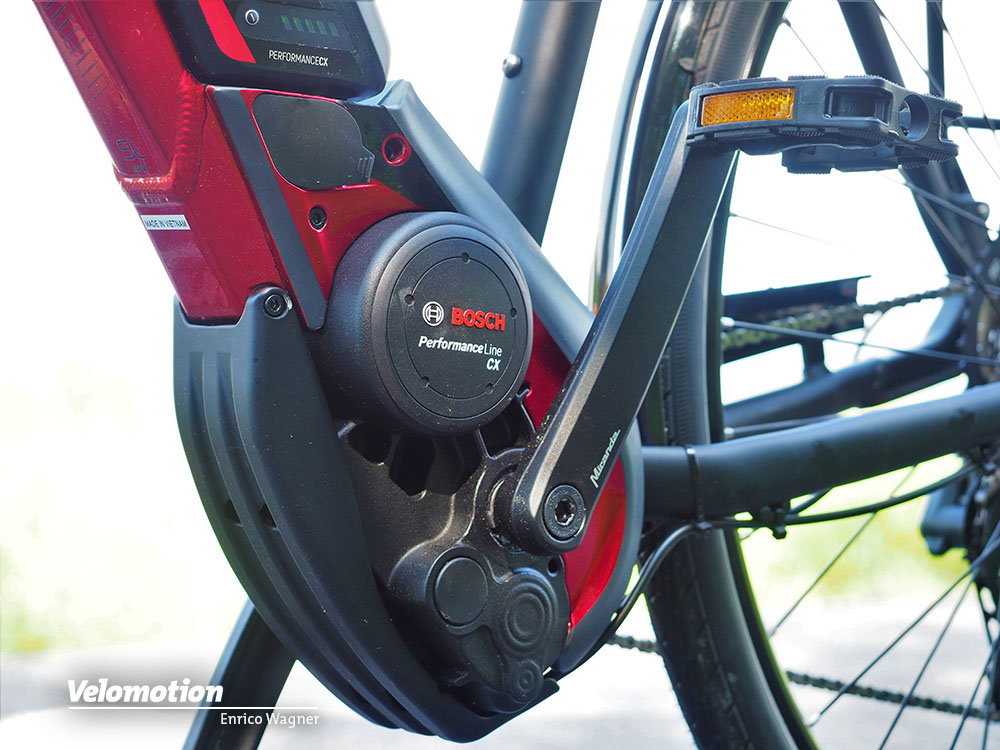
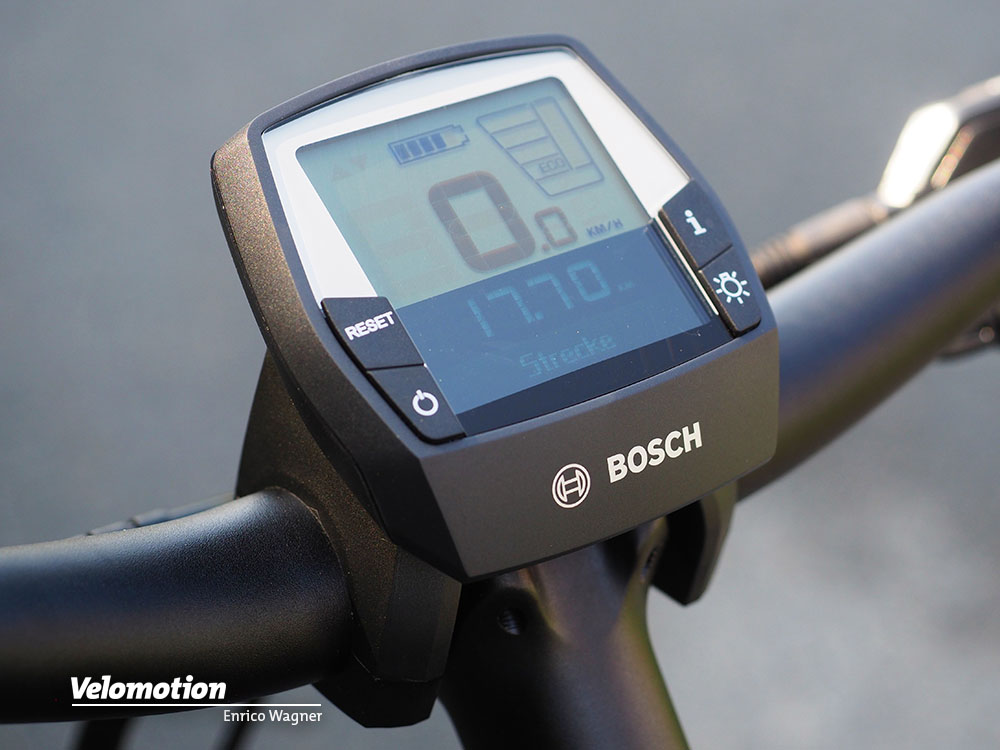
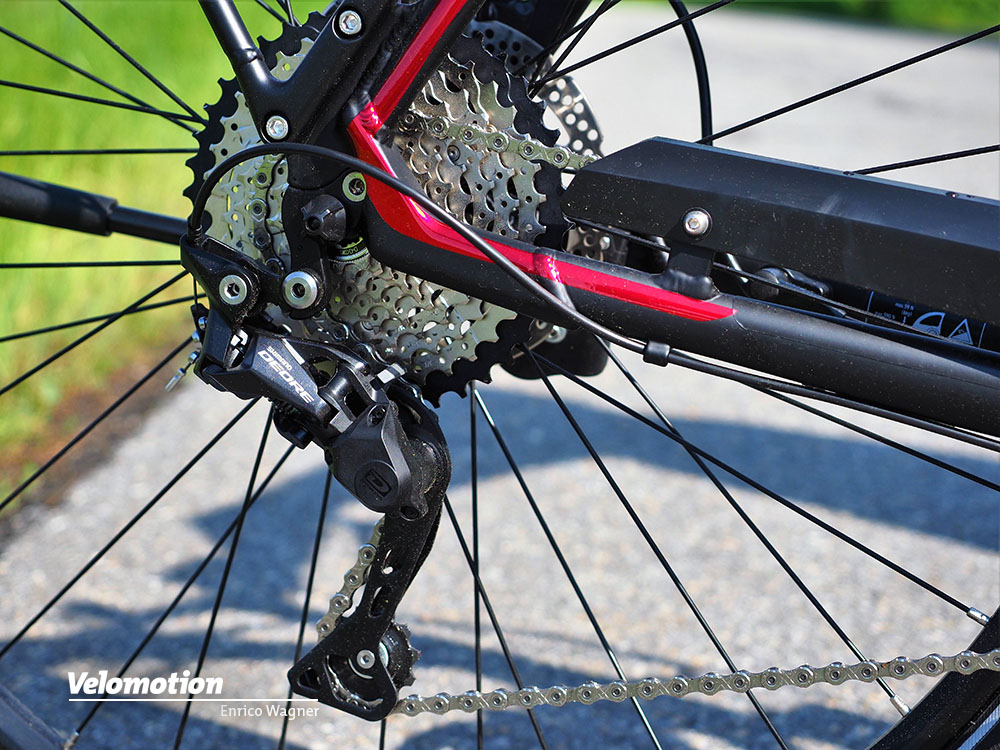
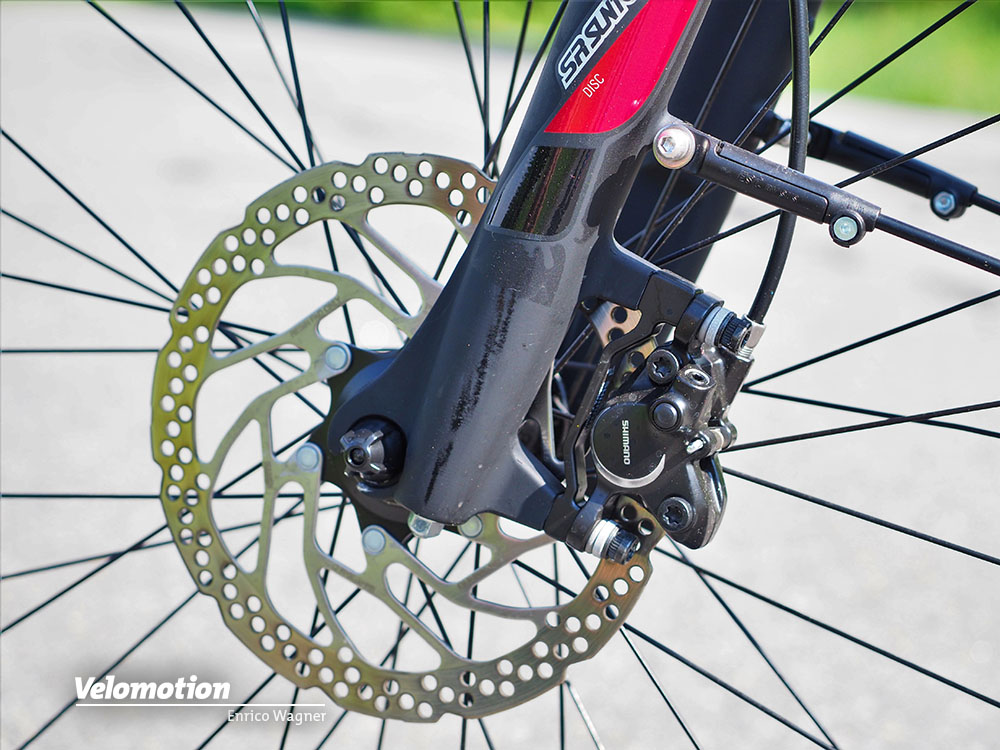
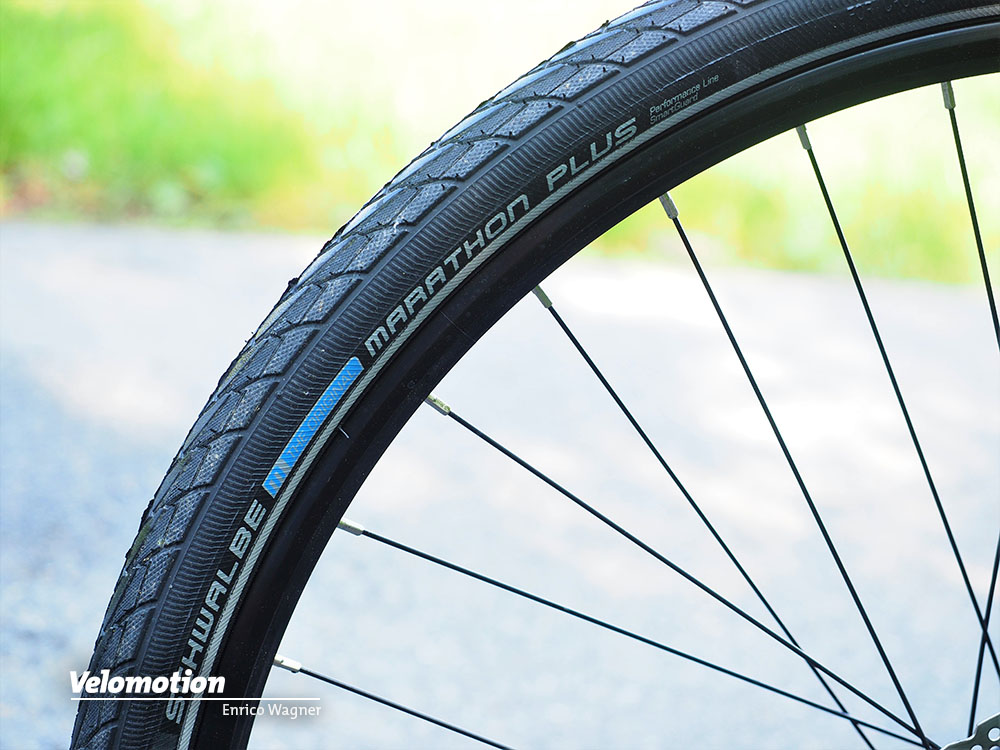
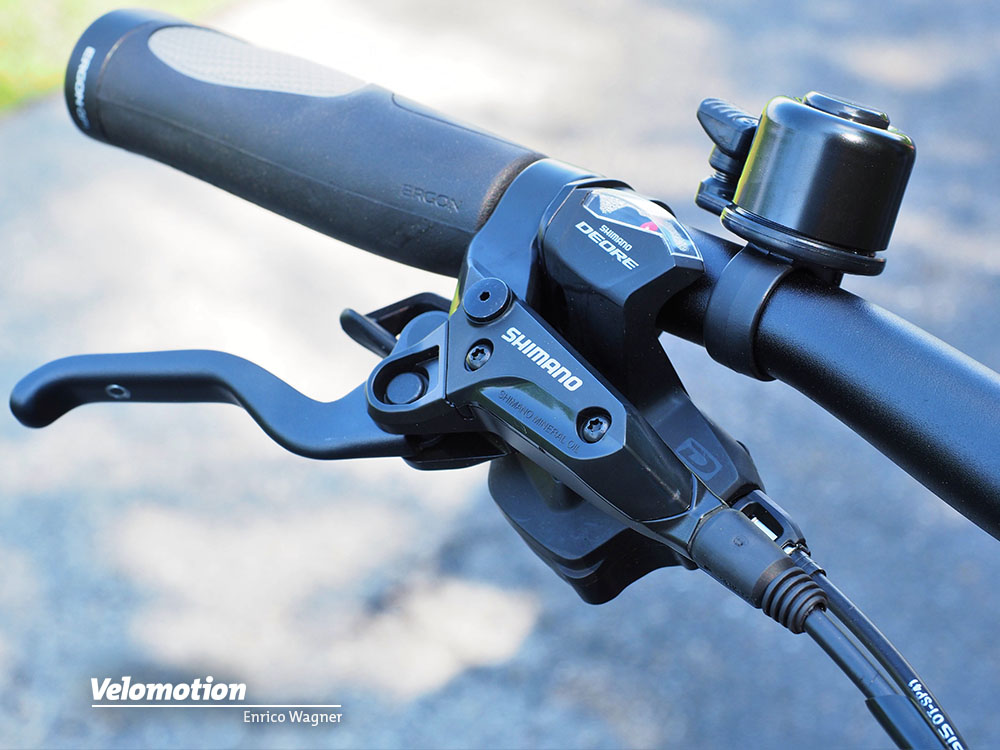
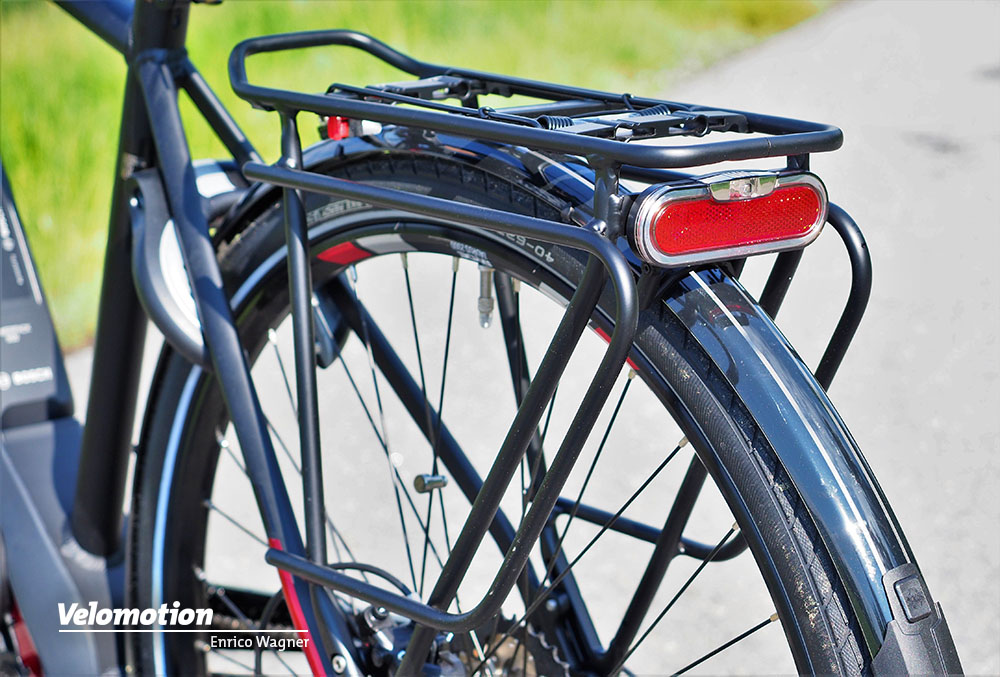

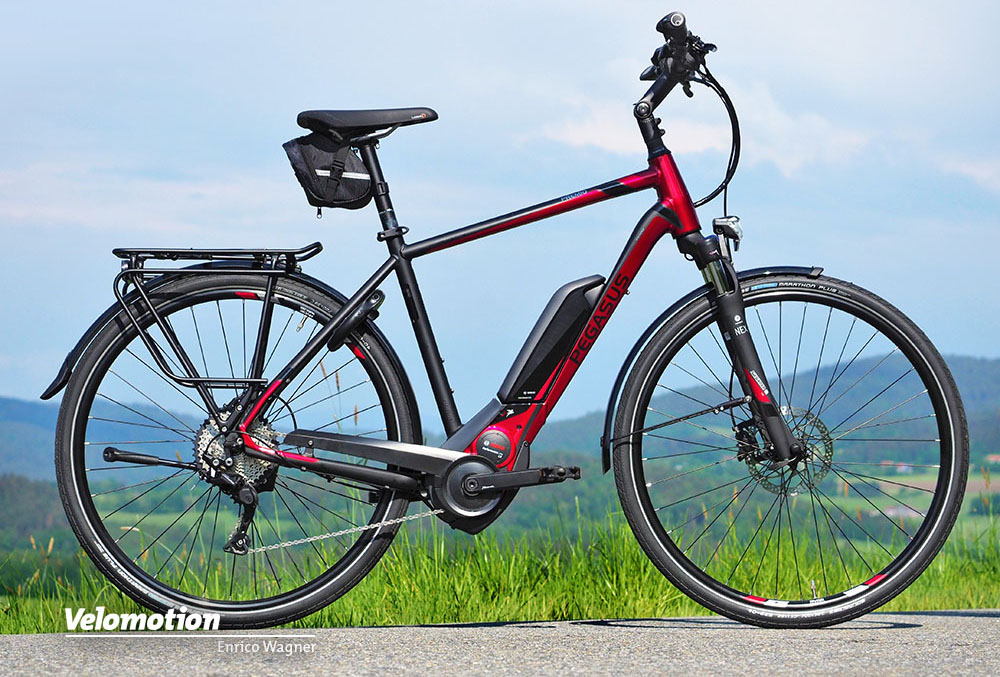
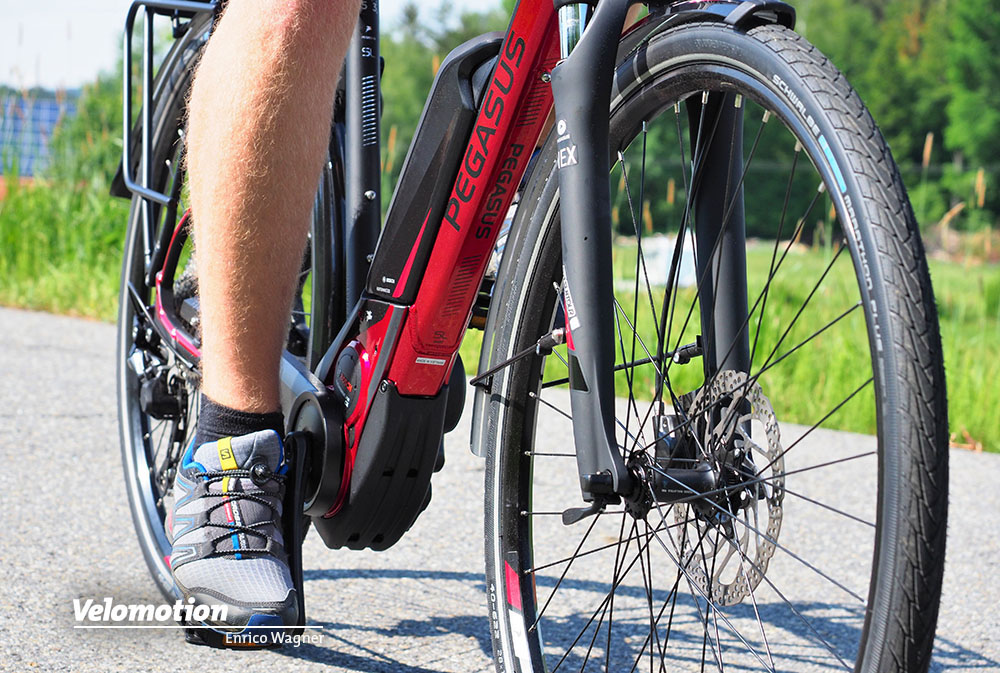
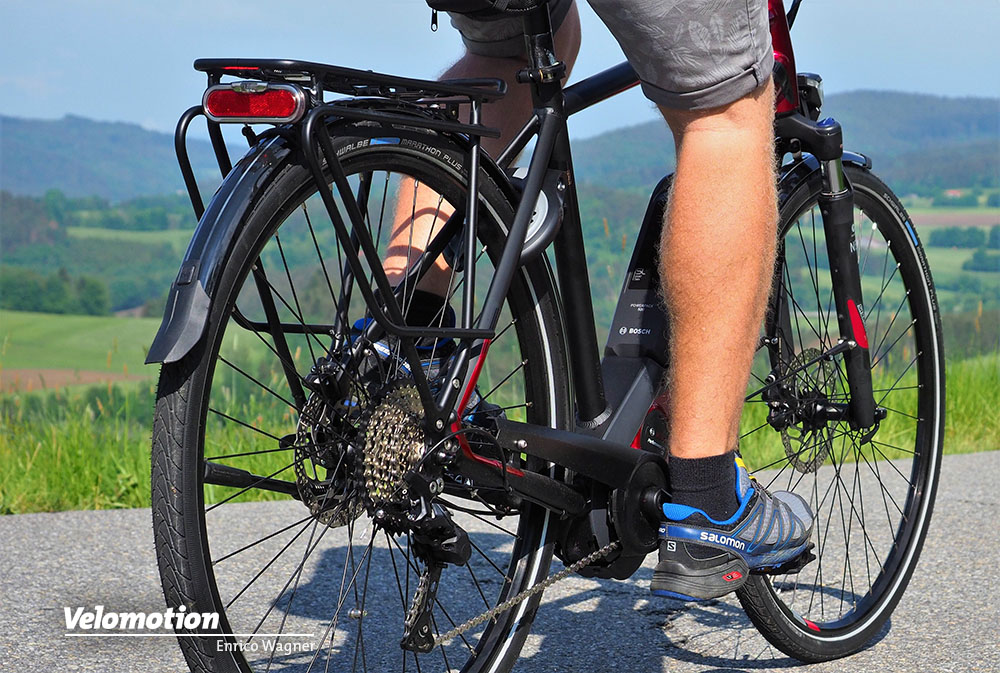
Schreibe einen Kommentar